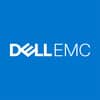Hybrid cloud storage combines public and private cloud storage as well as on-premise storage. Compare top vendors now.


Hybrid cloud environments meet one of the greatest enterprise needs: flexible computing and storage options for data. Business data, workloads, and applications have different needs, and a public cloud or private cloud alone aren’t always the best environment for them.
Data storage specifically benefits from multiple cloud and tiering options; some stored data needs to be consistently available for high-speed access. This data is used by critical applications and databases, for example. Other data is rarely accessed and requires low-cost cold or archive storage. A hybrid cloud storage solution allows enterprises to maximize their storage options, rather than forcing one cloud to fit all.
This article largely focuses on how data is managed and stored within providers’ hybrid cloud environments. Many of the top hybrid cloud platforms include computing services as well as storage, so vendor information may extend to other cloud features as well.
Also Read: Hybrid Cloud Storage Tips
Jump to:
The term “hybrid” is a popular word in the technology industry, but it’s used to describe many computing environments that aren’t a true hybrid cloud. Though hybrid cloud storage can encompass a variety of environments, it must:
A good hybrid cloud storage platform should also:
Hybrid cloud and multicloud are not necessarily the same thing. A multicloud environment utilizes at least two clouds — for example, AWS and Google Cloud — but both could be public clouds. Hybrid cloud environments are a subset of multicloud that must have both public and private.
This distinction is important because businesses searching for a true hybrid cloud want the variety of choice that comes with hybrid cloud. Often, businesses need some public cloud storage, like Amazon Glacier for archive storage, which will cost them less. Many also need private cloud storage, like Pure Storage Flashblade, which uses fast flash storage for critical high-performing workloads.

Cloud vendor Rackspace gives users a way to connect to the top public cloud providers through its hosting feature RackConnect. Using RackConnect, customers can link their top public cloud choices to a managed hosting environment. Rackspace offers single-tenant hosting, and through its managed hosting service performs administrative IT tasks to help users’ IT teams. Engineers who specialize in Linux, Windows, or VMware manage these hosting environments.
Customers can use Rackspace data center space through colocation and migrate their storage resources to the data center of their choice. Rackspace users also have access to OpenStack Cloud, a platform which NASA and Rackspace created through a partnership. OpenStack is a free, open source private cloud platform that’s useful for data center resource pools, virtual machines, and containers.

Qumulo Core, a “file data platform,” offers unstructured data management, an important feature for enterprises with largely unstructured data. The file data platform manages applications, workloads, and large-scale enterprise data for hybrid cloud environments. It’s intended to help business users manage all of their data through all of its stages.
Qumulo Core gives users the option to access multiple other services, known as data services, including scaling storage dynamically and adding more unconfigured nodes to a cluster for more storage capacity. Users have the ability to move data to Amazon Glacier, the archive tier of public cloud provider AWS.
Core features data snapshots, replication, and failover for disaster recovery and protection. Data at rest receives 256-bit software encryption.

NetApp’s hybrid cloud approach aims to make data flexible and moveable while preventing it from being too distributed or scattered. Hybrid cloud environments require flexibility for data to move where it will be most effective, but if data is too scattered, it will be more difficult to manage. NetApp understands this. Its solution includes ONTAP, a software-defined storage operating system that makes data more portable.
All three major public clouds are available to NetApp users. Azure NetApp Files, a service for migrating and running important workloads, is also available. Users can tier cold data to a public cloud to reduce storage costs.
NetApp hybrid cloud users have a Cloud Manager, which IT personnel can use to monitor their data within cloud environments, viewing exactly which cloud they’re in and how much space they have. NetApp users can quickly create a new environment from their management screen, selecting the main underlying storage and size and easily replicating to another cloud environment if needed.

Through Azure, Microsoft offers StorSimple, a solution that automatically shifts cool data to cloud storage environments. StorSimple supports options for on-premises storage arrays, if users want to install storage hardware in their on-premises data centers.
There are two versions of StorSimple:
StorSimple provides software-based disaster recovery for data and snapshots, which help back up data.
Also Read: Best Storage and Disk Arrays 2021

Nutanix offers hybrid cloud for object and file storage, including unstructured data. Nutanix Files, a hybrid storage system for files, is ideal for edge servers, remote office locations, and data centers. For object storage, users can tier cold data through AWS.
Nutanix’s hybrid cloud solution provides disaster recovery features for both objects and files, including replication. With Nutanix, data has lower RPOs (amount of irretrievable data after a disaster or loss). Clusters are based in AWS, and clusters can run applications in either public or private clouds, simplifying what could otherwise be a complex migration process. Users can move applications between clouds as needed.

Dell’s expansive cloud platform includes options for hybrid storage and computing environments. Users can choose between two array options: Dell EMC PowerMax, which features fast NVMe persistent storage, and Dell EMC Unity XT, which offers all-flash and hybrid flash storage.
In Dell’s hybrid cloud infrastructure are other cloud features:
Both hybrid cloud and multi-cloud strategies allow enterprises to diversify their storage. Public cloud storage is expansive and often includes multiple tiers for different types of data. On-premises storage is still important, though sometimes less flexible and scalable, because enterprises can employ greater security, especially for data protection or privacy reasons. Some companies aren’t comfortable storing all of their sensitive data in a public cloud. Hybrid cloud strategies allow them to balance a variety of data needs. This goes for workloads, too, not just storage.
Some storage platforms, notably Pure Storage FlashBlade, have on-premises flash storage that’s incredibly fast, but also provide cloud-based management or integrations with at least one large public cloud. Enterprise storage may shift toward flash storage, particularly NVMe, with extensive backup and recovery capabilities and cloud-based management consoles.
Flash storage is extremely beneficial for stored data that needs to be accessed and processed regularly; flash, NVMe in particular, may play a large role in hybrid cloud storage in the next few years.


Jenna Phipps is a staff writer for Enterprise Storage Forum and eSecurity Planet, where she covers data storage, cybersecurity and the top software and hardware solutions in the storage industry. She’s also written about containerization and data management. Previously, she wrote for Webopedia. Jenna has a bachelor's degree in writing and lives in middle Tennessee.

Enterprise Storage Forum offers practical information on data storage and protection from several different perspectives: hardware, software, on-premises services and cloud services. It also includes storage security and deep looks into various storage technologies, including object storage and modern parallel file systems. ESF is an ideal website for enterprise storage admins, CTOs and storage architects to reference in order to stay informed about the latest products, services and trends in the storage industry.
Property of TechnologyAdvice. © 2025 TechnologyAdvice. All Rights Reserved
Advertiser Disclosure: Some of the products that appear on this site are from companies from which TechnologyAdvice receives compensation. This compensation may impact how and where products appear on this site including, for example, the order in which they appear. TechnologyAdvice does not include all companies or all types of products available in the marketplace.